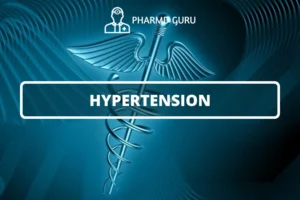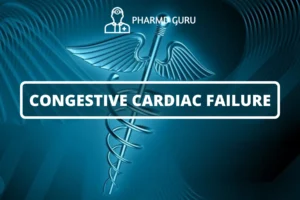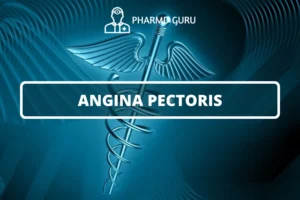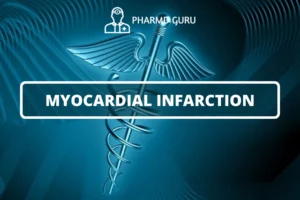Chronic Obstructive Airways Disease (COPD) is a chronic respiratory condition characterized by persistent airflow limitation that is not fully reversible. It encompasses a group of progressive lung diseases, including chronic bronchitis and emphysema. In this article, we will delve into the etiopathogenesis (the underlying causes and mechanisms) of COPD and discuss the pharmacotherapy options available for its management.
SCROLL DOWN TO THE BOTTOM OF THIS PAGE FOR ACTUAL NOTES.
Table of Contents
- Understanding the Etiopathogenesis of COPD
- Risk Factors and Causes
- Inflammatory Response in COPD
- Airway Remodeling and Destruction
- Classification of COPD
- Pharmacotherapy for COPD
- Bronchodilators
- Inhaled Corticosteroids
- Combination Therapy
- Other Medications
- Oxygen Therapy
- Pulmonary Rehabilitation
1. Understanding the Etiopathogenesis of COPD
The primary cause of COPD is long-term exposure to noxious particles or gases, most commonly from cigarette smoke. Other factors, such as occupational exposures to dust and chemicals, air pollution, and genetic predisposition, can also contribute to the development of COPD. The etiopathogenesis involves a complex interplay between inflammation, oxidative stress, protease-antiprotease imbalance, and abnormal tissue repair processes.
2. Risk Factors and Causes
Cigarette smoking is the leading risk factor for COPD, accounting for the majority of cases. Prolonged exposure to secondhand smoke, occupational dust and fumes (e.g., in mining or construction industries), air pollution, and genetic factors (e.g., alpha-1 antitrypsin deficiency) also increase the risk of developing COPD.
3. Inflammatory Response in COPD
COPD is characterized by a chronic inflammatory response in the airways and lungs. Inhaled particles and gases trigger an immune response, leading to the recruitment of inflammatory cells, such as neutrophils, macrophages, and T lymphocytes. This sustained inflammation damages the airway walls and leads to mucus hypersecretion, narrowing of the airways, and airflow limitation.
4. Airway Remodeling and Destruction
Over time, the ongoing inflammation and oxidative stress in COPD lead to structural changes in the airways and lung tissue. Airway remodeling involves thickening of the airway walls, increased mucus production, and loss of elasticity. In emphysema, the destruction of alveolar walls results in enlarged airspaces and reduced gas exchange capacity.
5. Classification of COPD
COPD is classified based on the severity of airflow limitation and symptoms. The most widely used classification system is the Global Initiative for Chronic Obstructive Lung Disease (GOLD) staging. It categorizes COPD into four stages (1-4), with increasing severity from mild to very severe.
6. Pharmacotherapy for COPD
Pharmacotherapy plays a central role in managing COPD and aims to relieve symptoms, improve lung function, reduce exacerbations, and enhance quality of life. The treatment approach is tailored to the individual’s disease severity, symptoms, and response to therapy.
7. Bronchodilators
Bronchodilators are the mainstay of COPD treatment and work by relaxing the smooth muscles of the airways, opening them up and improving airflow. They are available in short-acting and long-acting forms, with the latter providing sustained bronchodilation and better symptom control.
8. Inhaled Corticosteroids
Inhaled corticosteroids are primarily used in combination with long-acting bronchodilators for patients with more severe COPD and a history of exacerbations. They help reduce airway inflammation and can improve symptoms, lung function, and quality of life.
9. Combination Therapy
Combination therapy, which combines a long-acting bronchodilator and an inhaled corticosteroid in a single inhaler, is often prescribed for individuals with moderate to severe COPD who experience persistent symptoms or exacerbations despite monotherapy.
10. Other Medications
Other medications, such as phosphodiesterase-4 (PDE-4) inhibitors and antibiotics, may be used in specific cases. PDE-4 inhibitors help reduce inflammation, while antibiotics are prescribed in cases of bacterial exacerbations.
11. Oxygen Therapy
Oxygen therapy may be prescribed for individuals with severe COPD and low blood oxygen levels. Supplemental oxygen improves oxygenation, relieves breathlessness, and can extend survival in selected patients.
12. Pulmonary Rehabilitation
Pulmonary rehabilitation is a comprehensive program that includes exercise training, education, and support for individuals with COPD. It aims to improve exercise capacity, reduce symptoms, and enhance overall physical and emotional well-being.
ACTUAL NOTES:




